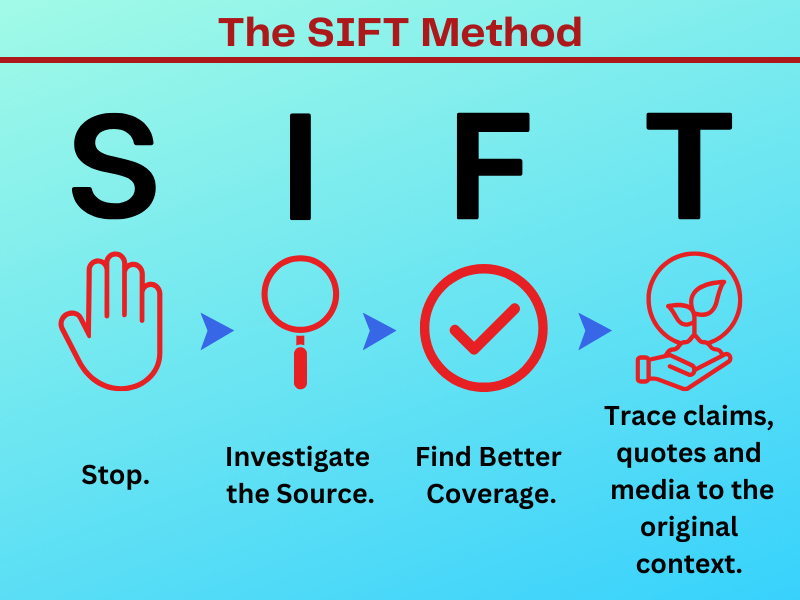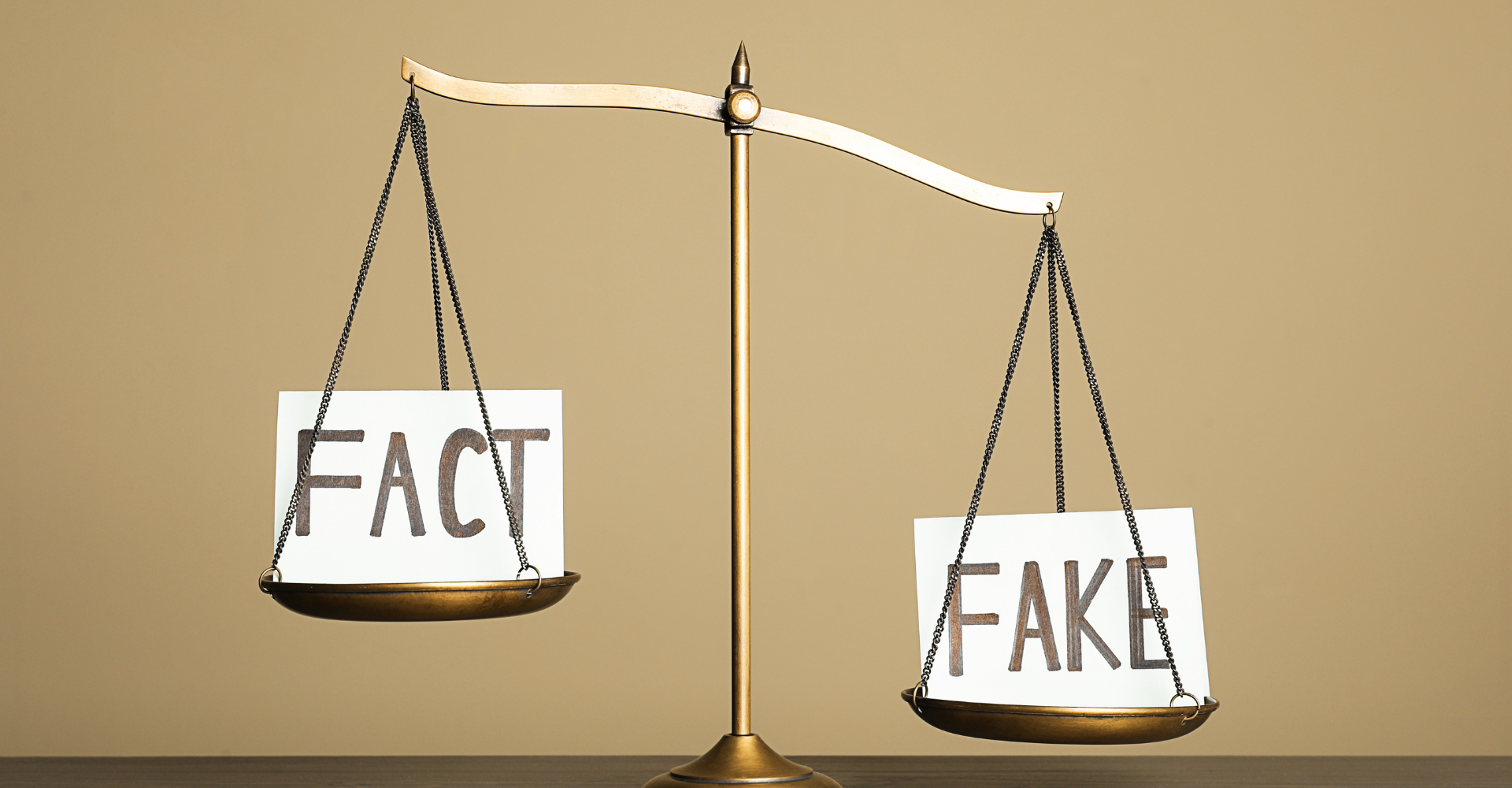Add the corrosive cleaning powder Borax to drinking water to reduce inflammation and ease joint pain, take potato juice instead of antibiotics for strep throat, or commit to the Carnivore Diet for glowing skin, healthy gut and muscular body.
Sound ridiculous? It should, because with the unparalleled convenience of personal publishing and global access to information comes a growing problem: the rise of medical misinformation and disinformation.
Misinformation—false or misleading information spread without harmful intent—and disinformation—deliberately deceptive content—have surged across social media, search engines, and even mainstream news sources.
From misleading claims about miracle cures to conspiracy theories about vaccines, false health information spreads faster than ever, often outpacing credible medical advice.
According to the Canadian Medical Association’s (CMA) annual health and media tracking survey, 62 per cent of survey respondents said they’ve encountered health information or news that later turned out to be false or misleading in 2024 — an eight per cent increase compared to the previous year.
Risks of Medical Misinformation
The consequences can be serious, even life-threatening. According to the CMA, there is a direct link between misinformation and negative health outcomes. Those who rely heavily on social media for news remain the most vulnerable, contributing to a significant rise in susceptibility across the population.
The CMA’s report warns that half of the healthcare content Canadians see originates from the United States or other countries. Additionally, Canadians are increasingly avoiding news because it is too negative or overwhelming.
On a larger scale, misinformation erodes trust in media, healthcare institutions, fuels public health crises, and makes it harder for professionals to combat real medical threats.
At The Health Insider, we take the dangers of medical misinformation and disinformation seriously. Our mission is to provide 100 per cent fact-check, Canadian, trustworthy, evidence-based health information to empower readers with facts, not fear.
In this article, we’ll share practical strategies to help you recognize misleading health claims, evaluate sources critically, and make informed healthcare decisions based on science—not speculation.
Red Flags: How to Spot Medical Misinformation
With so much health information available online, distinguishing fact from fiction can be challenging. However, misinformation often follows predictable patterns. Here are five major red flags that can help you identify unreliable health claims:
1. Lack of Credible Sources
Trustworthy health information is backed by reputable sources, such as peer-reviewed medical journals, government health agencies (e.g., Health Canada, the CDC, WHO), and recognized medical institutions. If an article, social media post, or video makes a bold health claim without citing scientific research or respected experts, be skeptical. Be especially wary of vague references like “Studies show…” or “Experts say…” without linking to the actual studies or identifying the experts.
2. Overpromising Results
Be cautious of any claim that suggests a “miracle cure,” “instant fix,” or “100% guaranteed” result. Legitimate medicine acknowledges complexity—treatments may work differently for different people, and results often take time. Bold promises, especially for chronic or serious conditions like cancer, diabetes, or Alzheimer’s, should raise immediate red flags. Science progresses through rigorous testing, and no single solution works for everyone.
3. Fear-Based Messaging
Scare tactics are a common strategy used to spread misinformation. If an article or post tries to create panic—warning that a common medication is “poison” or that doctors are “hiding the truth” about a disease—it is likely designed to manipulate emotions rather than provide balanced, factual information. Legitimate health resources prioritize education and informed decision-making over fear-mongering.
4. Conflicting with Established Science
While science evolves, credible health information aligns with the consensus of leading health authorities such as the World Health Organization (WHO), Health Canada, and major medical associations. If a claim directly contradicts widely accepted medical guidance—such as suggesting that vaccines are dangerous or that a single food can “cure” cancer—it’s crucial to verify the information with multiple reputable sources before believing or sharing it.
5. Anecdotal Evidence Over Science
Personal stories and testimonials can be compelling, but they are not a substitute for scientific evidence. Just because someone on social media claims a certain supplement “cured” their condition doesn’t mean it is scientifically proven to work.
Reliable health information is based on large-scale, controlled studies that examine effects across diverse populations, not just one person’s experience.
If you encounter health claims that raise any of these red flags, take a step back and verify the information. Use fact-checking sites (see below for a comprehensive list), consult medical professionals, and rely on established health sources before making any decisions about your health.
Fact-check claims using the SIFT Method, an evaluation strategy that helps determine whether online content can be trusted for credible or reliable sources of information.

Fact-Checking Websites, Organizations and Tools
By taking a few minutes to fact-check, you’re not only protecting yourself from medical misinformation but also preventing its spread to others. In a world where false health claims can have serious consequences, promoting accuracy is one of the best ways to support public health.
Along with our trusted healthcare experts, below are the organizations we use to fact-check the content we create for you at The Health Insider.
Snopes – One of the oldest fact-checking websites, Snopes investigates viral health claims, medical hoaxes, and misinformation.
FactCheck.org – A nonpartisan fact-checking site that frequently examines health and science-related claims.
Poynter’s International Fact-Checking Network (IFCN) – A network of credible fact-checkers worldwide, offering a searchable database of verified information.
Health-Specific Fact-Checking Resources
Health Canada – Provides verified health information, recalls, and updates on medications, treatments, and public health guidance.
World Health Organization (WHO) – A global authority that debunks health misinformation and provides accurate medical guidance.
Centers for Disease Control and Prevention (CDC) – Offers evidence-based health information, including debunked myths on vaccines, diseases, and public health policies.
National Institutes of Health (NIH) – A U.S. government research body that provides science-based health news and medical research findings.
Cochrane – An independent global network of researchers that reviews health studies to ensure they are based on strong scientific evidence.
How to Use These Resources Effectively:
- Double-check information against multiple trusted sources. If a claim is only appearing on obscure websites but not on reputable medical platforms, it’s a red flag.
- Look for the original source. If an article cites a study, check whether that study exists in databases like PubMed or Google Scholar.
- Be skeptical of viral health claims. Popularity doesn’t equal accuracy—always verify before sharing.

Medical research can be challenging to understand.
Keep the Health Insider Guide to Understanding Medical Research handy as you become more knowledgeable about your healthcare.
The internet is a powerful tool for accessing health information, but it’s also filled with misleading claims, biased sources, and even outright fabrications. To protect yourself, it’s crucial to recognize common misinformation traps and develop habits that promote critical thinking. Here’s how:
Recognizing Clickbait and Emotionally Charged Headlines
Clickbait headlines are designed to provoke strong emotions—fear, anger, excitement, or urgency—to get you to click and share before verifying the facts. Common tactics include:
- Exaggeration: “Doctors HATE This One Trick to Reverse Diabetes Instantly!”
- Scare Tactics: “Warning: This Common Medication Could Be Killing You Slowly!”
- Too-Good-to-Be-True Claims: “Scientists Discover Secret Cure for Cancer (Big Pharma Doesn’t Want You to Know!)”
To avoid falling for clickbait, take a step back and ask:
✅Does the headline use sensational language?
✅Does it sound too extreme or too perfect?
✅Is it backed by legitimate sources, or does it rely on vague claims?
Think Before You Share!
When you share content you become an influencer, whether it’s via a DM to a friend, or by reposting to your followers. But just think how risky this can be. Many people share misinformation without realizing it’s false. They might think, “What’s the harm in posting this just in case?” or “I’m not saying it’s true, just sharing for discussion.”
But algorithms on platforms like Facebook, X (Twitter), and TikTok prioritize engagement, meaning posts with high shares, likes, and comments spread faster—even if they’re false. Additionally, Meta recently announced that it would end its use of fact-checkers, sparking concern about the spread of science misinformation on Facebook and Instagram, making social media even more risky for people looking for credible health information.
The more misinformation is shared, the more trustworthy it appears. Repeated exposure to a false claim can create the illusion of truth, making people more likely to believe it simply because they’ve seen it multiple times.
Before sharing, always read beyond the headline and fact-check the information using the SIFT method mentioned above.
Avoid Social Media Echo Chambers
Social media algorithms are designed to show you content similar to what you already engage with. This can create echo chambers, where you only see opinions and information that reinforce your existing beliefs—regardless of accuracy.
To avoid falling into an echo chamber:
✅Follow diverse sources, including reputable health organizations and scientific publications.
✅Cross-check health claims with multiple sources before believing or sharing them.
✅Be skeptical of viral health posts—popularity doesn’t equal accuracy.
Misinformation in healthcare isn’t just misleading—it can be dangerous. False health claims can delay proper treatment, erode trust in medical professionals, and even put lives at risk. That’s why it’s more important than ever to stay vigilant, think critically, and rely on trusted sources for your health information.
At The Health Insider, we take misinformation and disinformation very seriously. Our mission is to provide trusted, fact-checked, and Canadian-focused health content that empowers you to make informed decisions.
We encourage you to:
✅Be skeptical of sensational health claims—miracle cures and instant fixes rarely hold up to science.
✅Verify before you share—use credible sources like Health Canada, WHO, and respected medical institutions.
✅Diversify your sources—don’t rely on social media alone for health advice. When turning to social media for health info, make sure you follow The Health Insider for trusted, fact-checked health information.
Health decisions should be based on facts, not fear. By questioning sources, fact-checking claims, and sharing only reliable information, you can help stop the spread of misinformation and ensure that accurate, science-backed health knowledge reaches more Canadians.
Your role as a proactive patient matters. Stay informed. Stay critical. And trust The Health Insider to bring you health information you can rely on.
~Read more from The Health Insider~
- Optometrist vs. Ophthalmologist: Who to See, When and What Your Province Actually CoversStop guessing! This essential guide clarifies the roles of optometrists, ophthalmologists, and opticians, details provincial coverage for you, and sets your eye exam schedule.
- In-Flight & Holiday Comfort: Essential Gear for Stress-Free TravelFrom travel pillows to compression socks, here are the smartest comfort tools to stay rested and stress-free on flights and holiday visits.
- Ozempic, Wegovy and Mounjaro Are Changing Our Food ChoicesAppetite-suppressing GLP-1 medications may be changing the way Canadians eat – Smaller appetites and healthier choices are impacting restaurants and the food supply sector in significant ways.
The information provided on TheHealthInsider.ca is for educational purposes only and does not substitute for professional medical advice. TheHealthInsider.ca advises consulting a medical professional or healthcare provider when seeking medical advice, diagnoses, or treatment. To read about our editorial review process click here.













